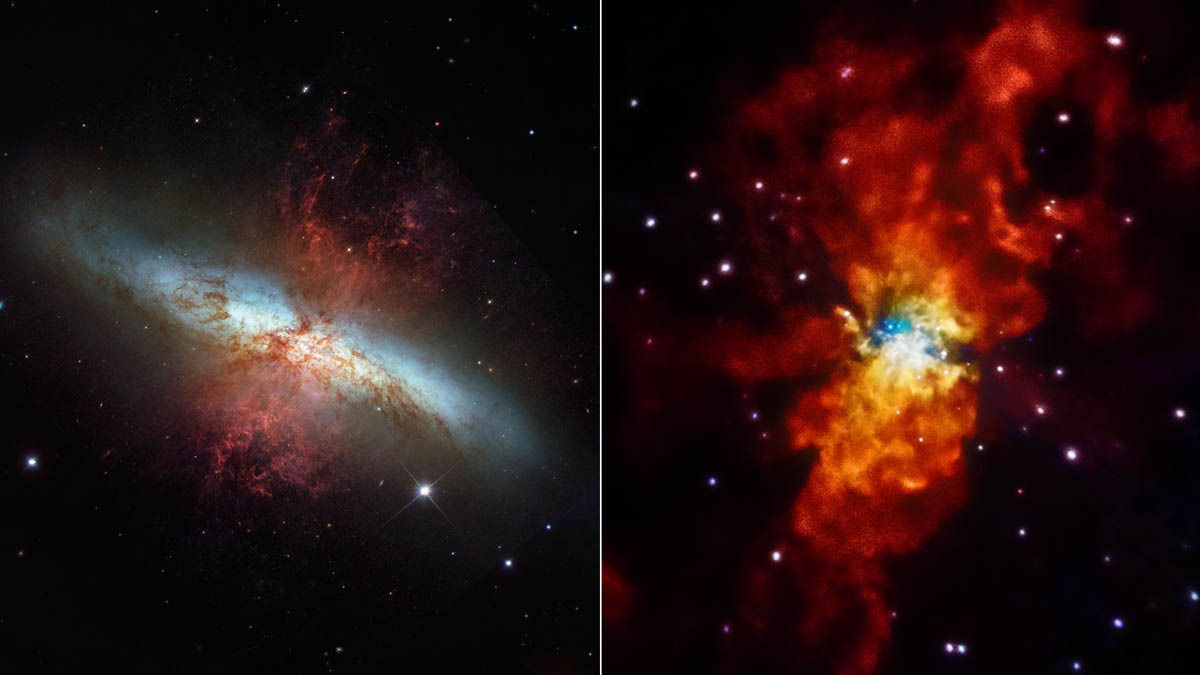The bright X-rays of M82 X-2 highlight it as a magenta-coloured object in this image of Messier 82 (Source: NASA/JPL-Caltech/SAO/NOAO)
Astronomers observing a distant galaxy have found the brightest dead star ever recorded, giving off the energy equivalent of 10m suns and adding more questions to the mystery surrounding black holes.
NASA’s Nuclear Spectroscopic Telescope, NuSTAR, discovered the surprisingly bright dead star while observing a recent supernova in the galaxy Messier 82 (also known as the ‘Cigar galaxy’) about 12m lightyears away.
NuSTAR picked up on bright X-rays coming from a ULX – a source of ultraluminous X-rays –known as M82 X-2.
ULXs are generally thought to be medium-sized black holes, the missing link between smaller, stellar-size black holes and the gargantuan ones at the heart of most galaxies. However, black holes do not pulse – pulsars do, and NuSTAR measured a pulse rate of 1.37 seconds from M82 X-2.
The pulsating dead star also has the energy output of about 10m suns, 10 times more than that which has been observed from other X-ray pulsars.

View of Messier 82 from NASA’s Hubble Space Telescope (left) and an X-ray view from NASA’s Chandra X-ray Observatory. (Source: NASA/STScI/SAO)
When is a black hole not a black hole?
Pulsars are neutron stars which, like black holes, are the stellar remnants formed following a supernova – the explosive death of a star.
Neutron stars are smaller in mass than young stars, but very dense. For example, M82 X-2 has about the same mass as our sun but is just over half the size of Dublin.
Unlike black holes, pulsars send out beams of radiation ranging from radio waves to ultra-high-energy gamma rays, and it’s these rays that produce a pulsed signal as the star spins.
Fiona Harrison, NuSTAR’s principal investigator at the California Institute of Technology, has called M82 X-2 the ‘Mighty Mouse’ of stellar remnants, saying “It has all the power of a black hole, but with much less mass.”

The pulsing X-ray beams from M82 X-2. (Source: NASA/JPL-Caltech)
A pulsar with a black hole’s appetite
The gravity of neutron stars pulls in matter from companion stars causing it to heat up and glow with X-rays in a process called accretion. Astronomers suggest that the surprising brightness of M82 X-2 could be due to a mighty feast.
“The pulsar appears to be eating the equivalent of a black hole diet,” Harrison elaborated.
“This result will help us understand how black holes gorge and grow so quickly, which is an important event in the formation of galaxies and structures in the universe.”
Data from NASA’s Chandra X-ray Observatory and Swift satellite have also confirmed that M82 X-2 is a pulsar and this discovery has been published in the latest issue of Nature.
NuSTAR, Swift and Chandra will conduct follow-up investigations while NuSTAR will observe more ULXs to see if any other pulsars turn up.
Don’t miss our Innovation Ireland Forum on 24 October in the Guinness Storehouse, Dublin.